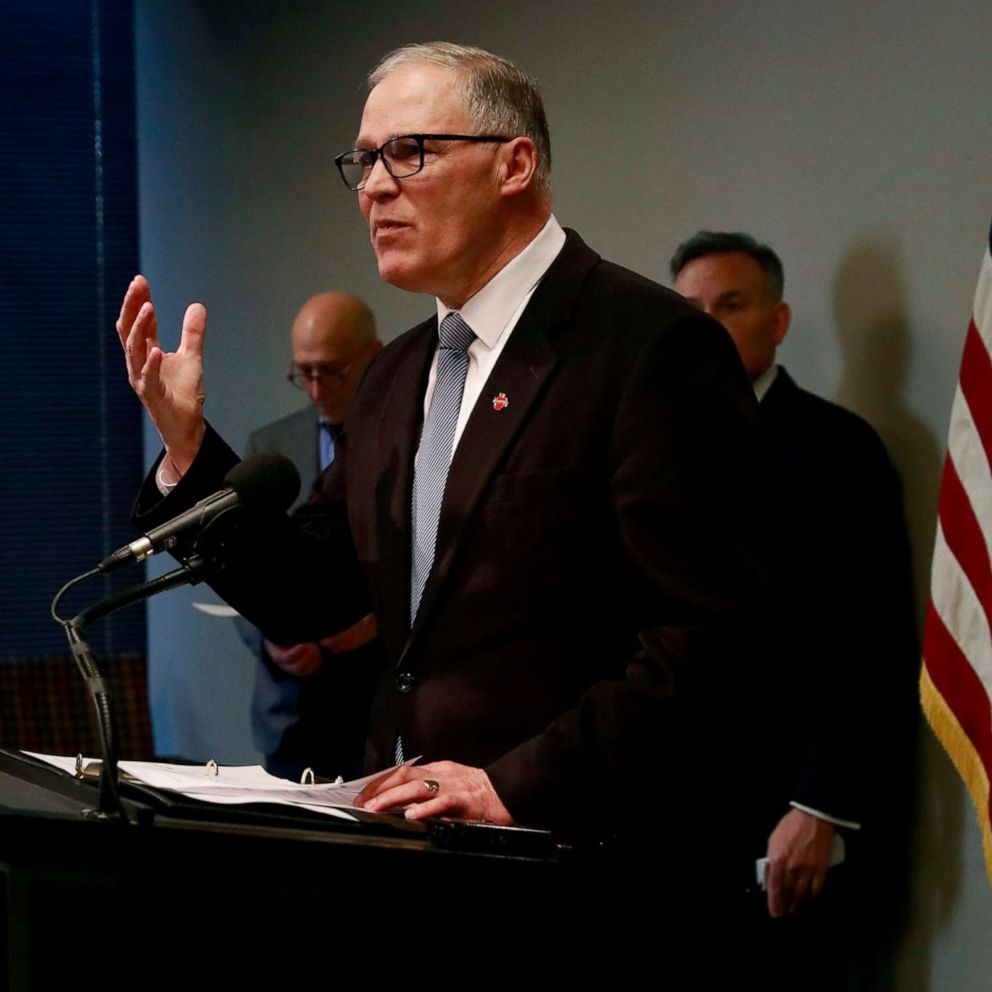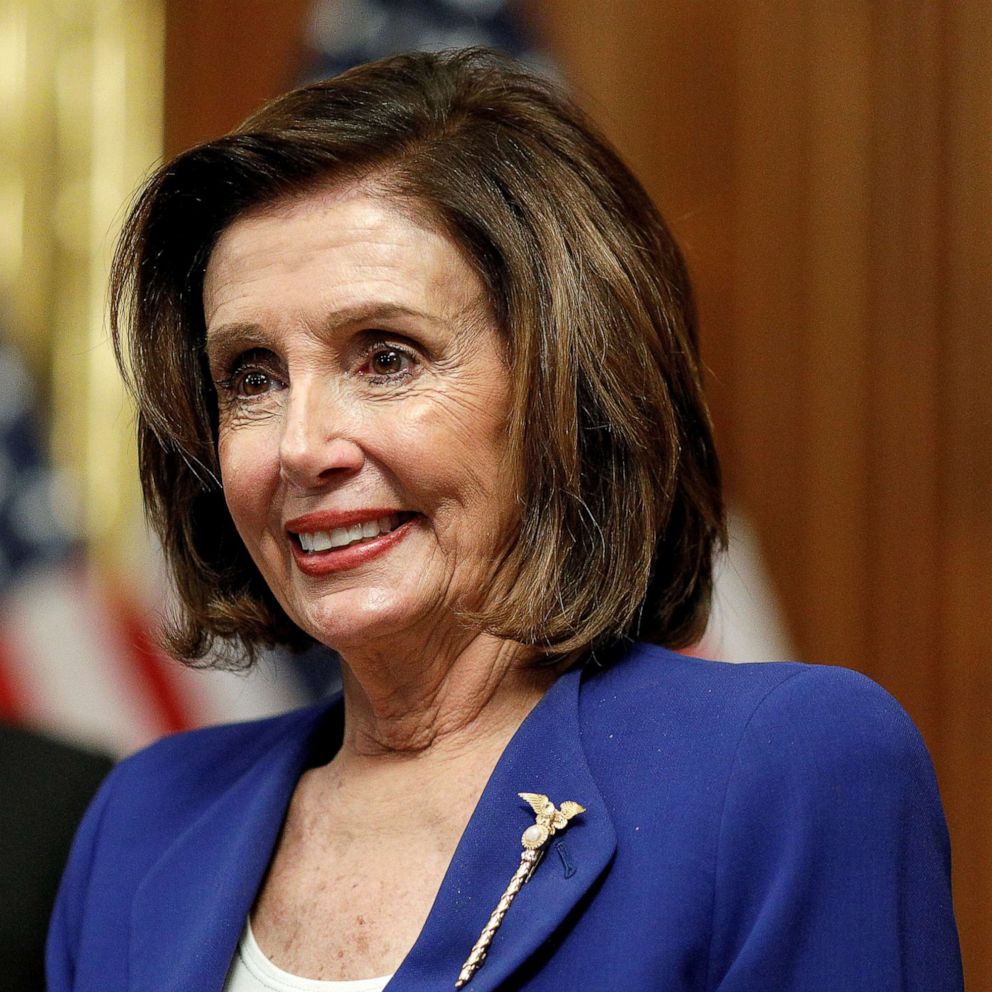'Road map' to recovery report: 20 million coronavirus tests per day needed to fully open economy
The United States has conducted 3.7 million tests for COVID-19.
With President Donald Trump saying he wants to lift stay-at-home novel coronavirus orders and open up parts of the country, more than 45 economists, social scientists, lawyers and ethicists say there's a growing consensus pointing to a major step necessary to put Americans back to work: dramatically upscaling testing.
In a report titled "Roadmap to Pandemic Resilience," released on Monday morning, a blue-ribbon panel of thought leaders across the political spectrum called COVID-19 "a profound threat to our democracy, comparable to the Great Depression and World War II."
"It's a moment for a 'Can Do America' to really show up and put itself to work," Danielle Allen, lead author of the report and a professor at Harvard University's Edmond J.Safra Center on Ethics, told ABC News.
The report says that ending the quarantine safely will require testing, tracing, and supported isolation, a combination known by the acronym TTSI.
"What people need to recognize is that a massively scaled-up testing, tracing and supported isolation system is the alternative to national quarantine," Allen said. "We all had to learn PPE [Personal Protective Equipment] and we all had to learn about flattening the curve ... now we have to learn about TTSI."
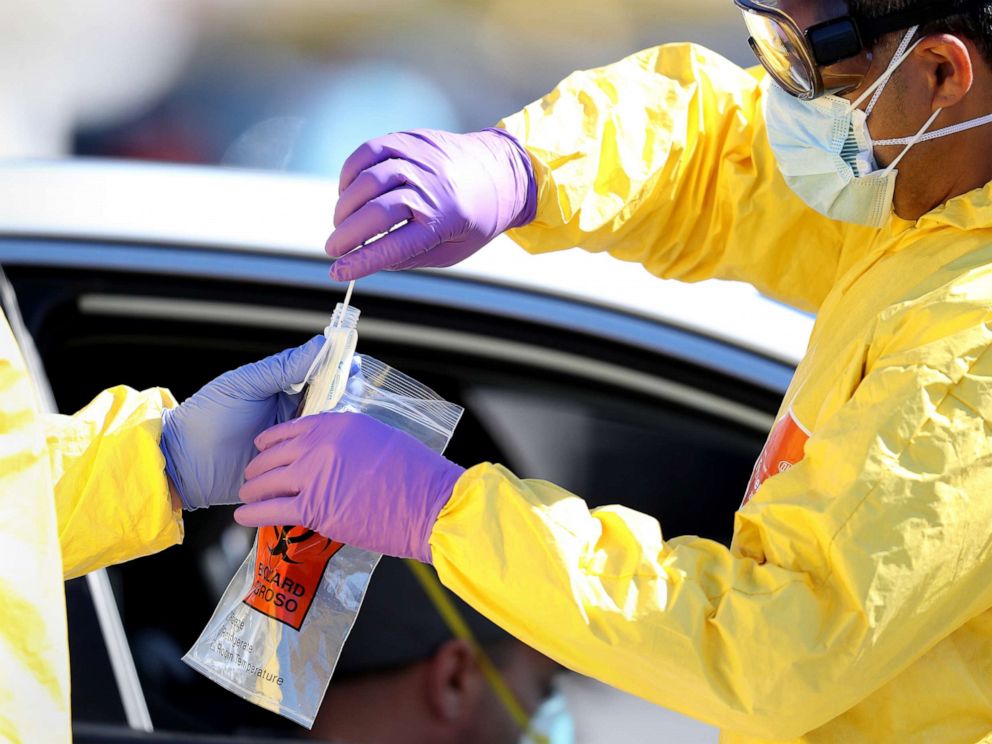
20 million tests a day
Test producers will need to deliver 5 million tests per day by early June to safely open parts of the economy by late July, according to the report. To "fully re-mobilize the economy," the country will need to see testing grow to 20 million a day, the report suggests.
"We acknowledge that even this number may not be high enough," according to the report.
Some experts, including Nobel laureate economist Paul Romer, who did not assist in the report but has a similar approach, estimate the country may need more than 30 million tests per day.
As of Sunday, the virus had infected 755,000 people in the United States and killed more than 40,000, according to the Center for Systems Science and Engineering at Johns Hopkins University. More than 35,000 new cases have been confirmed since Friday, according to the data.
During a coronavirus White House briefing last week, Trump said that 48 separate coronavirus tests have been authorized and that the Food and Drug Administration is working with 300 companies and laboratories to widen the nation's testing capacity.
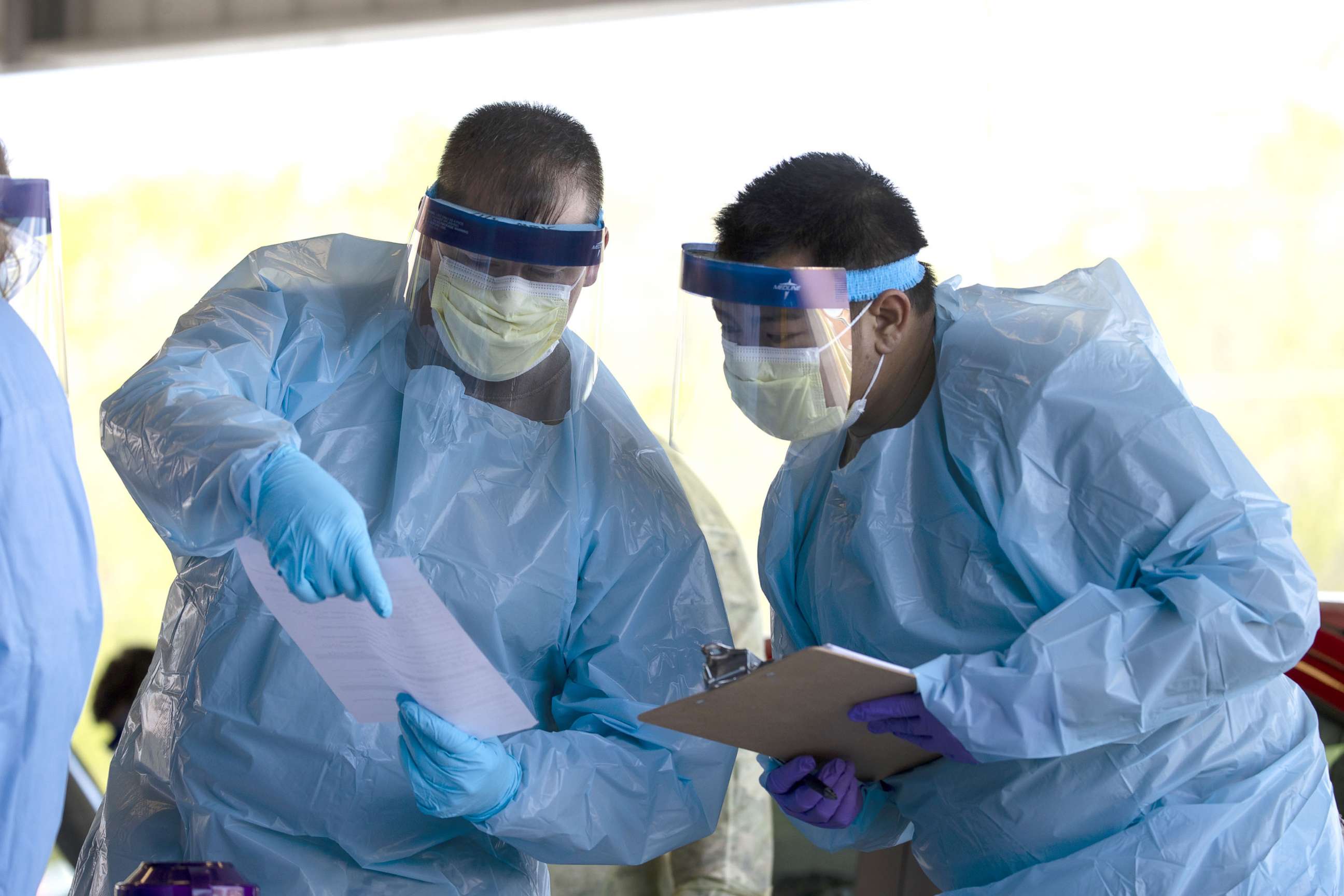
One of the largest biotech firms manufacturing the COVID-19 test, Roche Diagnostics, said it is producing about 400,000 test kits per week. Abbott Laboratories, which has created a 5-minute test, says it plans to boost its production from 50,000 tests per day to 2 million tests a month by June and is also working to distribute about 4 million antibody tests -- which shows if someone has recovered from the virus, even people who were never symptomatic -- by the end of April and about 20 million per month by the end of June.
Other companies are also ramping up the production of tests, but making and distributing 20 million tests a day across the country is a daunting task -- one that could require vigorous use of the Defense Production Act of 1950, which authorizes the president to require private businesses to accept and prioritize contracts for materials deemed necessary for national defense. Trump has used the act sparingly during the pandemic, specifically to order some companies to produce ventilators.
"You can think of it as a Marshall Plan. You can also think of it as Eisenhower's highway infrastructure, building all those great roads across the country," Allen said. "What we really need is for the federal government to set up a pandemic testing supply board that will coordinate the supply chain and achieve that massive ramp up as quickly as possible."
Some politicians have expressed skepticism in the federal government's ability to muster the political willpower to accomplish the type of testing that will be required to fulfill Trump's ambition to economically reopen the country as quickly possible.
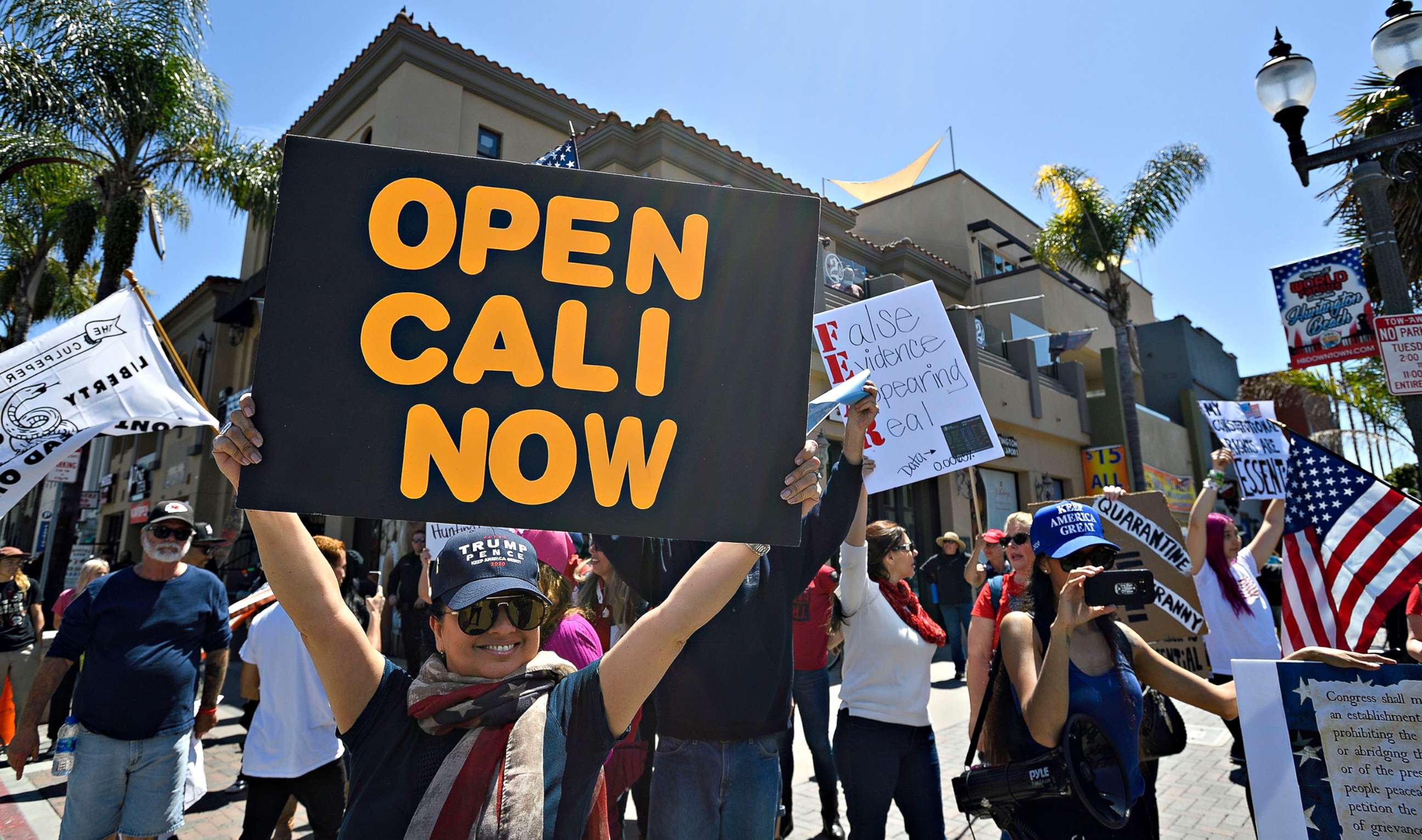
During a private call with Democratic senators on Friday, Vice President Mike Pence, who is spearheading the White House coronavirus task force, got an earful from lawmakers venting their frustrations with the Trump administration's coronavirus testing plan, with some calling it woefully inadequate.
Maine Sen. Angus King, an Independent and former governor, reportedly told Pence the administration's failure to develop an adequate national testing regime is a "dereliction of duty," a source with knowledge of the call told The Associated Press.
Pence and the administration's top health officials said on Friday that the United States has conducted about 3.7 million diagnostic tests -- roughly 120,000 a day -- and argued that the U.S. has the infrastructure to improve testing capacity.
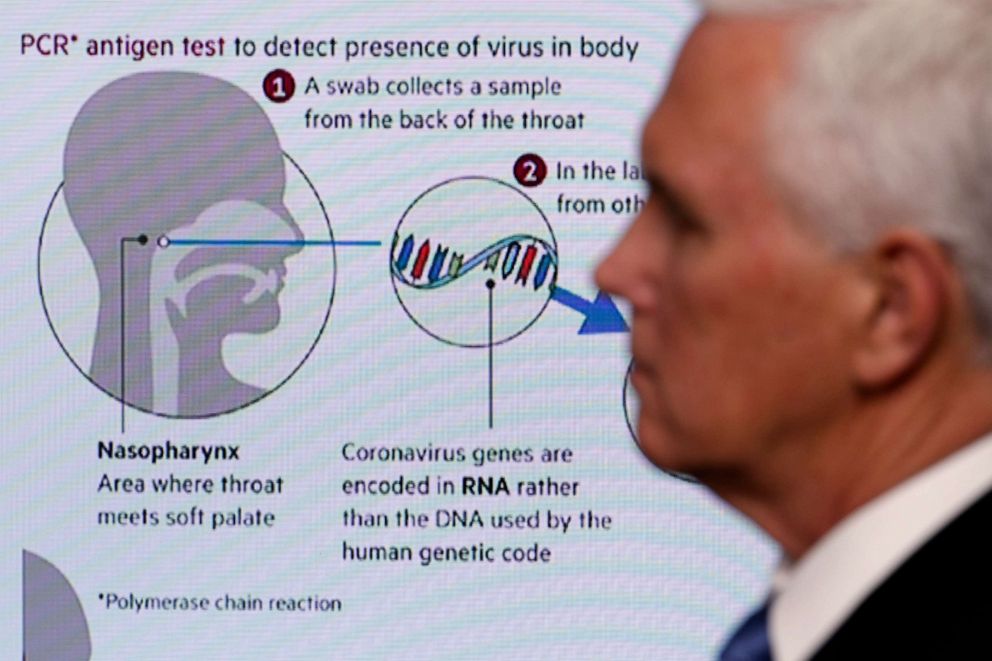
New York Gov. Andrew Cuomo, whose state has been hit hardest by the pandemic, said that a big problem with testing has been the lack of uniformity in the tests and a shortage of reagent chemicals necessary to run diagnostics on the tests.
"It gets very complicated very quickly because you have the national manufacturers who sold their machines to local labs. The local labs then need to go back to that manufacturer to run their tests. There's very little uniformity among the tests. You're trying to coordinate this whole private sector system," Cuomo said during his daily coronavirus briefing on Saturday.
"They have the test but they need the reagents to do a higher volume of tests,'' Cuomo added. ''When you go back to the manufacturer and say why don't you distribute more reagents, they say one of two things: 'I can't get more reagents because they come from China' ... 'We don't make them in the United States.' Or they say, the federal government is telling me who to distribute to.'"
Cuomo said the manufacturers are regulated by the federal government and "the federal government clearly has a role in addressing this crisis."
Despite criticism over testing, Trump has said some states who were left relatively unscathed by the virus are ready to begin a phased-in opening of their economies. The new report provides a pathway to open the economy and keep it open, rather than have waves of people return to collective quarantine.
Florida Gov. Ron DeSantis gave the green light to open some beaches around Jacksonville over the weekend. South Carolina Gov. Henry McMaster is reportedly set to unveil a plan on Monday to reopen beaches and retail businesses. Texas Gov. Greg Abbott on Friday introduced initial steps to reopen his state's economy in May, including easing elective surgery restrictions, reopening state parks and allowing all retail stores to provide product pickups.
Other governors are facing pressure from constituents to allow people to get back to work. Protests against stay-at-home orders have broken out in Michigan, Virginia, California, Kentucky, Minnesota, Ohio, North Carolina, Colorado, Utah and Washington state in recent days.
According to the report, bolstering testing requires eliminating chokeholds or bottlenecks in the supply chain. Because nasal swab tests, for example, are considered "biohazard material," they must be administered by health care workers wearing protective equipment and shipped in special containers to a lab. A safer, faster alternative could be the so-called "spit test" that was granted FDA emergency authorization last week.
"We ought to be able to have a way of doing testing that doesn't require PPE or you can just spit into this test tube. We can get past the problem of having to transport biohazards and that should permit a pathway to ramp up," Allen said.
And because COVID-19 is a stealth virus that can remain dormant in the body, the only way to know who has it is to test.
"One of the biggest challenges with COVID is the number of people who are asymptomatic carriers," Allen said. "It's hard to zero in on the number, but 20% to 40% of people who have the virus are asymptomatic. … That means you've got a whole lot of people out there spreading the virus around and we haven't been able to do anything about it."
Disease detectives
The new report says testing for the virus alone is not enough. The panel also calls for large-scale contact tracing of people. These human contact tracers -- or disease detectives -- notify anyone who might have been exposed to the virus and recommend they get tested. Contact tracing represents a tried-and-true health tool used to control the AIDS epidemic in the United States and other pandemics.
''It means calling people, finding who they have been in contact with and then contacting these individuals and having individuals quarantine at home for 14 days and have them call in to see if they report symptoms,'' said Crystal Watson, a senior scholar at Johns Hopkins and one of the lead authors of a recent study from Johns Hopkins Center for Health Security.
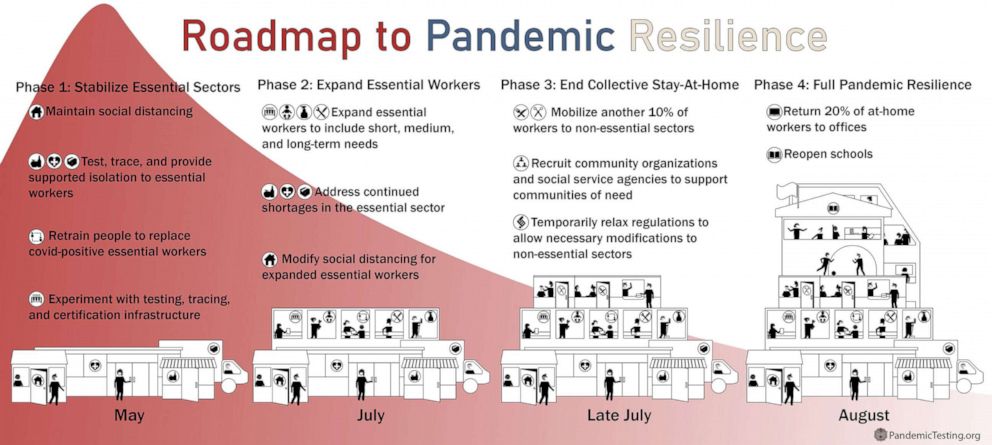
''If those contacts are quarantined at home, they do not expose anyone else and hopefully the transmission chain ends with them,'' Watson told ABC News.
The Johns Hopkins study recommends investing $3.6 billion to hire and train 100,000 contact tracing personnel. The new report goes even further, recommending hiring hundreds of thousands of contact tracers.
The key, experts say, is testing and tracing fast enough so that the virus doesn’t spread; getting the time frame down from days to hours.
Recently, the state of Massachusetts hired 1,000 contact tracers to reach out to people who may be at risk of infection. Allen says the better the contact tracers are at their jobs, the fewer the tests required.
"The level of tests we need depends on how effectively we can trace people's contacts, warn those contacts about their exposure and test them, and isolate those who are COVID-positive," Allen said.
Digital contact tracing
While manual contact tracing provides a much-needed human touch, smartphone technology is also playing an increasingly important role in helping reduce the spread of the coronavirus. The two go hand-in hand: manual tracing reaches out to close contacts you know you have seen, while digital tracing can alert people you don’t know who were close to you in public spaces.
Google and Apple recently announced a partnership to enable governments and health agencies to use Bluetooth for proximity-based contact tracing while preserving user privacy and security. Expected to launch in May, the partnership will enable app users to receive an alert saying they should be tested if they recently crossed paths with or were in the same space as someone who tested positive.
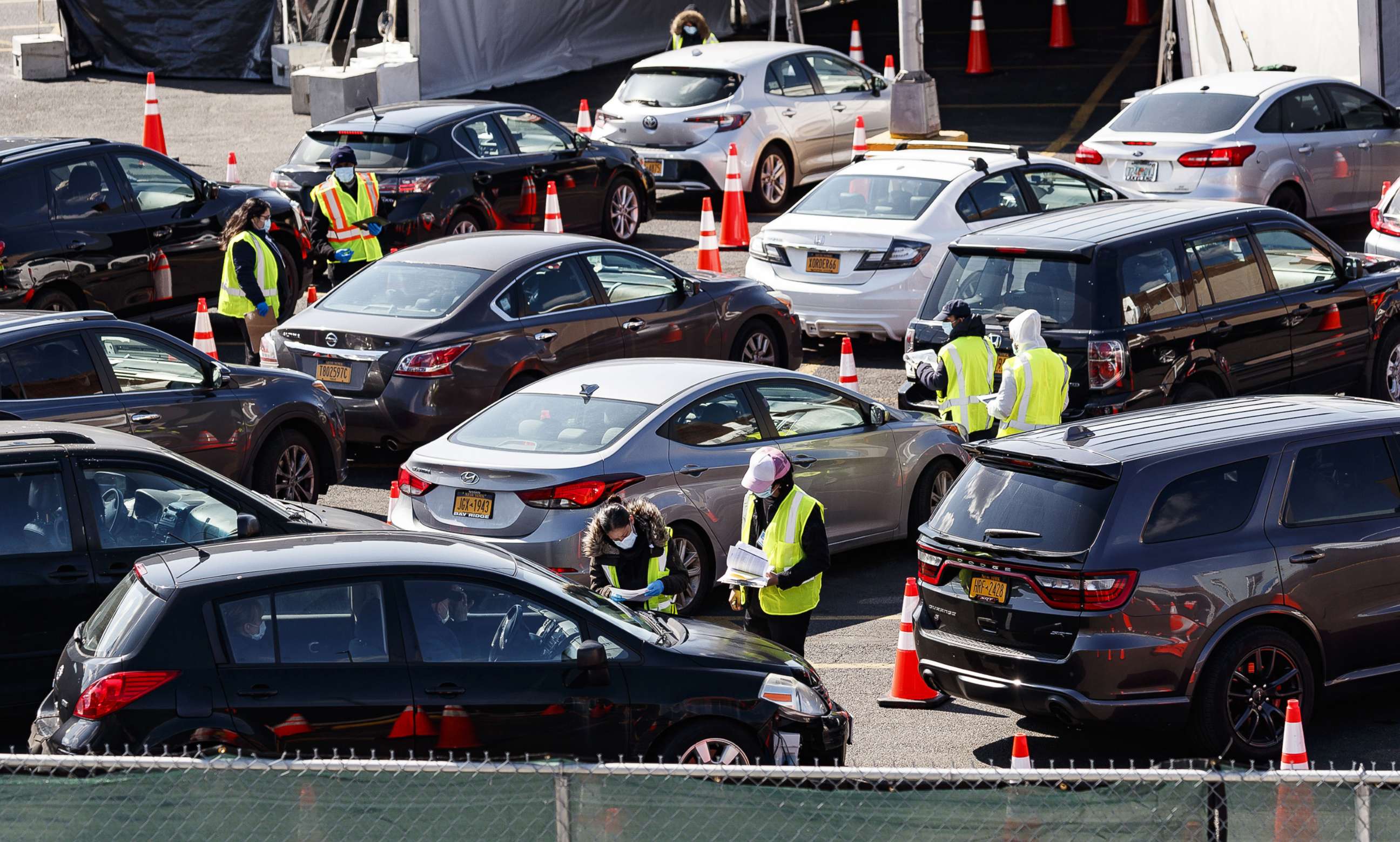
Digital contact tracing has been used in China, Singapore and South Korea. Germany, Australia and Denmark plan to introduce similar apps in the next few weeks, and Australia is reportedly planning to use an existing app called TraceTogether, which was used in Singapore.
If enough people download the app -- estimates currently say about 40-60% of the population in a given area -- digital contact tracing has proven effective in shutting down the virus. The success depends on notifying users early on that they have come into contact with an infected individual, before they develop symptoms .
Crucially, notified users can then self-isolate before they spread the infection to others, greatly reducing the rate of the virus spread overall.
And while concerns have been raised about the potential for abuse and mass surveillance, especially in countries where information is sent to a central authority, the report calls for preemptive regulation in the U.S. to ensure security and maximal privacy protections.
4 phases to resilience
The report details 4 specific phases to reopening the economy and ending the lockdown:
Phase 1: (May-June) 40% of the population -- including all essential workers (health care workers, firemen, police, sanitation, etc) -- will be tested and their contacts traced. Necessary isolation post-contact with infection will be supported, with paid sick leave and other resources.
Phase 2: (June-July) 70% of the population goes back to work -- including workers directly supporting the health sector, such as delivery, service, construction workers, building engineers, maintenance and food workers. The government makes massive infrastructure investments.
Phase 3: (July-Aug) 80% of the population is back to work, including those who must work at locations and in offices.
Phase 4: (Aug-March) All workers return to work and schools reopen. Continue to take precautions until a vaccine is widely available, but the lockdown is over.
How much will it all cost?
According to the bipartisan team who worked on the report, implementing its plan would cost between $100 billion and $300 billion over two years. But Allen suggested comparing the price tag to the astronomical cost the shutdown is accumulating.
''Collective quarantine is costing us $350 billion a month ... and we've seen the massive unemployment numbers,'' Allen told ABC News.
Allen believes the road map can help America create capacity for a pandemic resistant society -- one that is far better equipped to test for the next viral disease to come down the pike. But she also worries that partisan politics might squash the bipartisan purpose behind the plan.
"This has to rise above politics…," Allen said. "It's about all of us succeeding. No one wants to go to a baseball game and not feel safe. That's what we need to know to reopen the economy.''
